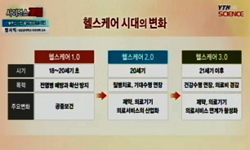The purpose of this study was to investigate the sport participation motivation and exercise addiction so find out the relationship between the participation motivation and exercise addiction. It also examine the exercise maintenance and drop-out of f...
http://chineseinput.net/에서 pinyin(병음)방식으로 중국어를 변환할 수 있습니다.
변환된 중국어를 복사하여 사용하시면 됩니다.
- 中文 을 입력하시려면 zhongwen을 입력하시고 space를누르시면됩니다.
- 北京 을 입력하시려면 beijing을 입력하시고 space를 누르시면 됩니다.
헬스 참가자의 참여동기와 운동중독 관계분석 = (The) Analysis of the relationship between exercise addictionand sport participation motivation of fitness center participants
한글로보기https://www.riss.kr/link?id=T10014108
- 저자
-
발행사항
부산 : 부산외국어대학교 교육대학원, 2004
-
학위논문사항
학위논문(석사) -- 부산외국어대학교 교육대학원 , 체육교육전공 , 2004. 8
-
발행연도
2004
-
작성언어
한국어
- 주제어
-
KDC
374.469 판사항(4)
-
발행국(도시)
부산
-
형태사항
ⅵ, 113p. : 삽도 ; 26cm.
-
일반주기명
참고문헌: p. 91-102
- 소장기관
-
0
상세조회 -
0
다운로드
부가정보
다국어 초록 (Multilingual Abstract)
The purpose of this study was to investigate the sport participation motivation and exercise addiction so find out the relationship between the participation motivation and exercise addiction. It also examine the exercise maintenance and drop-out of fitness center participants. The subjects were male and female 550 adults of over 18 years who are fitness center participants are located in Busan, Ulsan city through purposive sampling. The data through v11.0 statistics program are handled as PC. Also, this find Cronbach's α coefficient to verify believability. MANOVA is executed to verify difference between the exercise addiction factor and participation motivation. LSD is executed to verify difference of between group. it is executed multiple regression analysis by stepwise to search relation of sports participation motivation factor and exercise addiction factor. A significant level of p < .05 was used for all the statistical test. The results of this study are as follows:
1) Sport Participation Motivation
(1) Males showed higher scores with regard to intrinsic motivation and extrinsic motivation, while females showed higher scores in the field of a motivation.
(2) Twenties showed high scores for health-fitness and external motivation. On the contrary, thirties showed high scores for achievement, skill development and intrinsic motivation.
(3) The subjects participating in health-club over two years higher tendency in skill development, enjoyment, achievement of intrinsic motivation and conditioning, affiliation, external display of extrinsic motivation. Moreover, the subjects participating in health-club under 1 or 2 years higher tendency in affiliation.
(4) The motive to participation according to the participation frequency showed higher scores for enjoyment, conditioning almost every day. Affiliation, external display and a motivation showed higher scores during a week.
2) Exercise Addiction
(1) Differences in sex of exercise addiction show that, the scores are higher than females in positive and negative addiction.
(2) Positive addiction show higher scores than negative addiction of exercise addiction in age. Negative addiction statistically less different, positive addiction show that show thirties are higher scores than any other ages. Moreover, twenties show higher scores than fourties and thirties show higher scores than fourtise after finishing LSD.
(3) Positive addiction show higher scores than negative addiction according to the participation period of exercise addiction. Both elements show that participation period is more higher, exercise addiction is more higher too.
(4) Positive addiction show higher scores than negative addiction according to the participation frequency of exercise addiction. If participation frequency is more higher, positive addiction show more higher too. Also, if participation frequency is less higher, negative addiction show less higher.
3) The Influence for Sport Participation Motivation on the Exercise Addiction
Skill development, conditioning, external display in positive addiction show passive relation for knowing the relationship between participation motive and exercise addiction. External display, a motivation, skill development, achievement in negative addiction also show passive relation. In conclusion, skill development, external display have important influences on the positive and negative addiction.
목차 (Table of Contents)
- 목차 = i
- Ⅰ. 서론 = 1
- 1. 연구의 필요성 및 목적 = 1
- 2. 연구 문제 = 4
- 3. 연구의 가설 = 5
- 목차 = i
- Ⅰ. 서론 = 1
- 1. 연구의 필요성 및 목적 = 1
- 2. 연구 문제 = 4
- 3. 연구의 가설 = 5
- 4. 용어의 정의 = 6
- 1) 헬스(Health) = 6
- 2) 참여동기(Participation Motivation) = 6
- 3) 운동중독(Exercise Addiction) = 7
- Ⅱ. 이론적 배경 = 9
- 1. 스포츠 참여행동과 동기 = 9
- 1) 스포츠와 동기 = 9
- 2) 동기의 분류 = 11
- 3) 운동과 스포츠 참여의 결정요인 = 16
- 2. 중독 = 18
- 1) 중독의 개념 = 18
- 2) 중독의 특성 = 20
- 3) 중독의 진행과정 = 22
- 3. 운동중독 = 24
- 1) 운동중독의 개념 = 24
- 2) 운동중독의 진단기준 = 27
- 4. 선행연구 = 30
- 1) 스포츠 참여동기의 연구 = 30
- 2) 운동중독의 연구 = 33
- Ⅲ. 연구방법 = 35
- 1. 연구대상 = 35
- 2. 측정도구 = 37
- 1) 질문지 = 37
- 3. 측정 도구의 타당도 검사 및 신뢰도 검사 = 40
- 1) 측정도구의 타당도 검사 = 40
- 2) 측정도구의 신뢰도 = 43
- 4. 연구절차 = 47
- 5. 자료처리 = 48
- Ⅳ. 연구결과 = 49
- 1. 각 변인별 참여동기와 운동중독의 분석 = 49
- 1) 헬스 참가자의 참여동기 분석 = 49
- 2) 헬스 참가자의 운동중독 분석 = 66
- 2. 참여동기 요인이 운동중독에 미치는 영향 = 72
- Ⅴ. 논의 = 77
- 1. 참여동기 = 78
- 1) 성별 참여동기 = 78
- 2) 연령별 참여동기 = 79
- 3) 참여기간별 참여동기 = 80
- 4) 참여빈도별 참여동기 = 81
- 2. 운동중독 = 82
- 1) 성별 운동중독 = 82
- 2) 연령별 운동중독 = 82
- 3) 참여기간별 운동중독 = 83
- 4) 참여빈도별 운동중독 = 83
- 3. 참여동기 요인이 운동중독에 미치는 영향분석 = 84
- Ⅵ. 결론 및 제언 = 86
- 1. 결론 = 86
- 1) 참여동기 = 87
- 2) 운동중독 = 88
- 2. 제언 = 89
- 참고문헌 = 91
- (Abstract) = 103
- 부록 = 107












